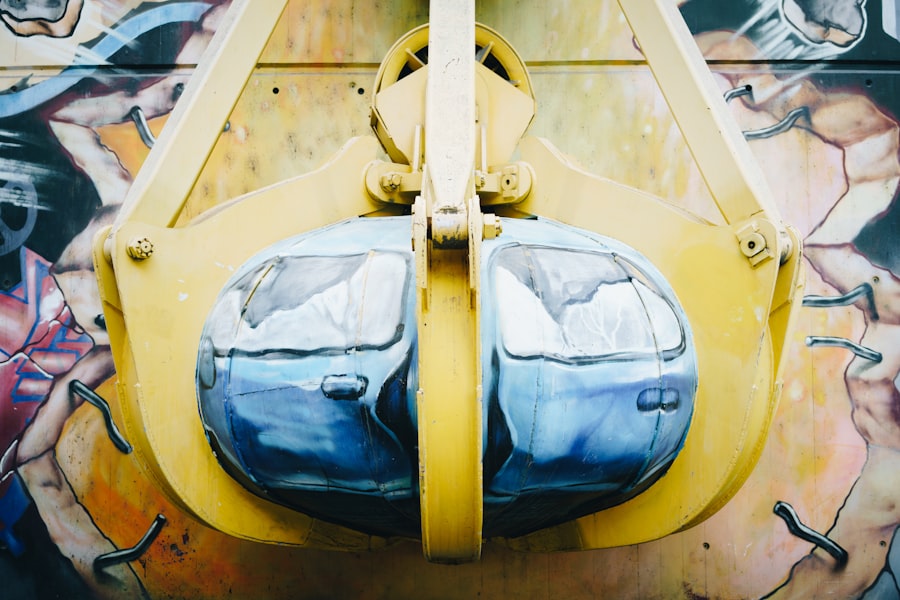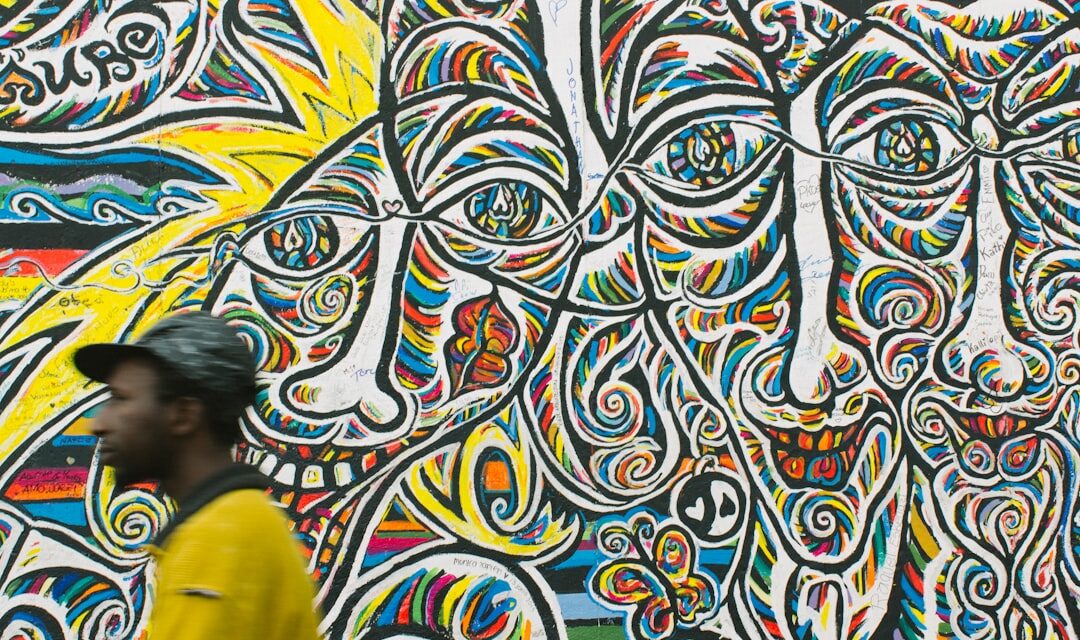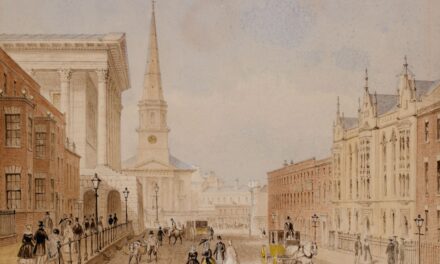Street art possesses a rich and diverse history dating back to ancient times. The earliest forms of street art can be traced to the cave paintings of prehistoric times, where early humans utilised natural pigments to create images on cave walls. Moving forward to the 20th century, street art as we know it today began to take shape.
In the 1960s and 70s, graffiti emerged as a form of expression in urban areas, particularly in New York City. Artists such as Taki 183 and Cornbread gained notoriety for their tags and murals, which were often perceived as a form of rebellion against the establishment. As street art continued to evolve, it became a means for artists to communicate their messages to the public, often addressing social and political issues.
In the 1980s, artists like Keith Haring and Jean-Michel Basquiat gained recognition for their graffiti-inspired artwork, which frequently tackled themes of activism and social justice. Today, street art has become a global phenomenon, with artists from all over the world utilising public spaces as their canvas to create thought-provoking and visually striking pieces. From murals and stencils to wheatpasting and installations, street art has become a powerful form of artistic expression that continues to captivate audiences worldwide.
Summary
- Street art has a rich history dating back to ancient civilizations, with modern street art emerging in the 1960s and 1970s as a form of urban expression.
- Different styles and techniques of street art include stencils, murals, graffiti, and wheatpasting, each with its own unique visual impact and message.
- Famous street artists such as Banksy, Shepard Fairey, and Invader have gained international recognition for their thought-provoking and visually stunning work.
- Street art has a significant impact on society, sparking conversations about social and political issues, beautifying urban spaces, and challenging traditional notions of art and public space.
- Legal and ethical issues surrounding street art include debates about property rights, vandalism, and the commercialization of street art, raising questions about the boundaries of artistic expression.
- Street art serves as a form of activism, giving a voice to marginalized communities, advocating for social change, and challenging power structures through visual storytelling.
- The future of street art is dynamic and ever-evolving, with increasing recognition in the art world and continued potential to inspire, provoke, and unite communities around the world.
Different Styles and Techniques of Street Art
Graffiti: Making a Statement
One of the most popular styles of street art is graffiti, which typically involves the use of spray paint to create large-scale murals and tags on public surfaces. Graffiti artists often use vibrant colours and bold lettering to make a statement and leave their mark on the urban landscape.
Stencilling and Wheatpasting: Techniques for Reproduction
Another common technique in street art is stencilling, which involves creating intricate designs by cutting out shapes on a stencil and then applying paint or ink to create a pattern on a surface. This method allows artists to reproduce their designs quickly and efficiently, making it a popular choice for creating detailed and visually striking pieces. Wheatpasting is another technique commonly used in street art, where artists create posters or images using a mixture of wheat flour and water to adhere them to walls or other surfaces.
Installations and 3D Artwork: Engaging with the Environment
Street art often incorporates installations and 3D artwork, where artists use found objects or materials to create interactive and immersive pieces that engage with the surrounding environment. These various styles and techniques demonstrate the diversity and creativity within the world of street art, showcasing the endless possibilities for artists to express themselves in public spaces.
Famous Street Artists and their Work

Over the years, numerous street artists have gained international recognition for their groundbreaking work and unique contributions to the world of art. One such artist is Banksy, whose identity remains a mystery but whose impact on the street art world is undeniable. Known for his politically charged and thought-provoking pieces, Banksy’s work often addresses issues such as war, consumerism, and government surveillance.
His distinctive stencilling technique and satirical imagery have made him one of the most influential figures in contemporary street art, with his pieces appearing in cities around the world. Another prominent figure in the world of street art is Shepard Fairey, best known for his iconic “Hope” poster featuring Barack Obama during the 2008 presidential campaign. Fairey’s work often incorporates bold colours and striking imagery to convey messages of social justice and activism.
His “Obey Giant” campaign, featuring the image of wrestler André the Giant, has become a symbol of counterculture and resistance, solidifying Fairey’s status as a leading figure in the street art movement. Other notable street artists include Invader, known for his pixelated mosaic installations inspired by retro video games, and Swoon, whose intricate wheatpaste portraits explore themes of humanity and vulnerability. These artists have left an indelible mark on the world of street art, inspiring countless others to push the boundaries of artistic expression in public spaces.
The Impact of Street Art on Society
Street art has had a profound impact on society, shaping public discourse and challenging traditional notions of art and creativity. By occupying public spaces with their work, street artists have the power to engage with diverse audiences and provoke meaningful conversations about social, political, and environmental issues. Street art has the ability to transform neglected urban areas into vibrant cultural hubs, breathing new life into communities and fostering a sense of connection and belonging among residents.
Additionally, street art has become a powerful tool for raising awareness about important causes, from climate change and human rights to mental health and inequality. Furthermore, street art has the potential to inspire positive change by encouraging civic engagement and activism. By addressing pressing issues through their artwork, street artists can mobilise communities to take action and advocate for meaningful solutions.
In this way, street art serves as a catalyst for social change, empowering individuals to voice their concerns and work towards a more equitable and just society. Moreover, street art has also become a significant driver of tourism and cultural exchange, attracting visitors from around the world to explore cities known for their vibrant street art scenes. By showcasing local talent and creativity, street art has become an integral part of urban culture, enriching the lives of both residents and visitors alike.
Legal and Ethical Issues Surrounding Street Art
Despite its cultural significance, street art often faces legal and ethical challenges due to its unconventional nature and use of public spaces. Many cities have strict regulations against graffiti and unauthorised artwork, leading to clashes between artists and local authorities. While some view street art as vandalism or defacement of property, others argue that it is a legitimate form of artistic expression that should be protected and celebrated.
The legality of street art is further complicated by issues of property ownership and public perception, as some property owners welcome street art as a means of revitalising urban areas, while others view it as a nuisance or eyesore. Ethically, street art raises questions about ownership and authorship, particularly in cases where artists’ work is appropriated or commercialised without their consent. The commodification of street art has led to debates about cultural appropriation and exploitation, as well as the ethical responsibilities of corporations and individuals who profit from the work of street artists.
Additionally, concerns about gentrification and displacement have emerged in relation to street art, as some argue that it contributes to the commodification of urban spaces and the displacement of local communities. These complex legal and ethical issues highlight the need for dialogue and collaboration between artists, authorities, and communities to find sustainable solutions that respect the rights of all stakeholders involved.
Street Art as a Form of Activism

The Power of Street Art in Sparking Conversations
Through their artwork, street artists can spark important conversations about race, gender, class, and other forms of oppression, ultimately contributing to a more inclusive and equitable society. Moreover, street art has the potential to mobilise communities and inspire collective action towards meaningful change. By creating public artworks that resonate with diverse audiences, street artists can galvanise individuals to participate in grassroots movements and advocacy efforts.
Unifying Communities and Inspiring Change
Whether through collaborative projects or solo interventions, street artists have the ability to unite people around shared values and aspirations for a better world. Furthermore, street art can serve as a form of resistance against oppressive systems and structures, offering a visual representation of dissent and resilience in the face of adversity.
Harnessing Creativity for Social Change
By harnessing the power of creativity and imagination, street art has become an indispensable tool for activists seeking to challenge injustice and build solidarity within their communities.
The Future of Street Art
As street art continues to evolve and expand its influence on global culture, its future remains full of possibilities and potential for growth. With advancements in technology and digital media, street artists are exploring new ways to engage with audiences through augmented reality experiences, interactive installations, and virtual exhibitions. These innovative approaches allow for greater accessibility and inclusivity in experiencing street art, transcending physical boundaries and reaching audiences around the world.
Additionally, collaborations between street artists and urban planners are shaping the future of public spaces by integrating artistic interventions into urban design projects that promote sustainability, community engagement, and cultural preservation. Furthermore, the growing recognition of street art as a legitimate form of artistic expression is leading to increased support for public art initiatives from governments, institutions, and private organisations. This shift towards embracing street art as a valuable cultural asset is creating opportunities for artists to receive funding, resources, and institutional support for their creative endeavours.
As a result, street art is becoming more integrated into mainstream cultural institutions such as museums, galleries, and educational programmes, further legitimising its place within the broader art world. With its ability to captivate audiences, provoke critical dialogue, and inspire social change, street art is poised to continue shaping our collective imagination and contributing to a more vibrant and dynamic cultural landscape in the years to come.
If you are interested in learning more about different art movements, you may want to check out an article on Cubism. This avant-garde movement, pioneered by artists such as Pablo Picasso and Georges Braque, revolutionised the way we perceive and represent the world. The article delves into the origins of Cubism, its key characteristics, and its impact on the art world. Understanding different art movements can provide valuable context for appreciating street art and its place within the broader art landscape.
FAQs
What is street art?
Street art is a form of visual art that is created in public spaces, often illegally, and is typically unsanctioned by authorities. It can take many forms, including graffiti, stencils, murals, and installations.
What are the different types of street art?
Some common types of street art include graffiti, stencils, murals, wheatpasting, and installations. Each type has its own unique characteristics and techniques.
Where can street art be found?
Street art can be found in urban areas around the world, including on buildings, walls, sidewalks, and other public spaces. It is often associated with urban environments and can be found in both residential and commercial areas.
What is the history of street art?
Street art has a long history, with roots in ancient cave paintings and traditional graffiti. Modern street art as we know it today emerged in the 1960s and 1970s, with artists like Keith Haring and Jean-Michel Basquiat gaining recognition for their work in public spaces.
Is street art legal?
The legality of street art varies depending on location and local laws. While some forms of street art may be illegal, many cities have embraced street art as a form of public expression and have designated areas where artists can create legally.
What are some famous street artists?
Some famous street artists include Banksy, Shepard Fairey, Invader, and Os Gemeos. These artists have gained international recognition for their work in public spaces and have had a significant impact on the street art movement.




